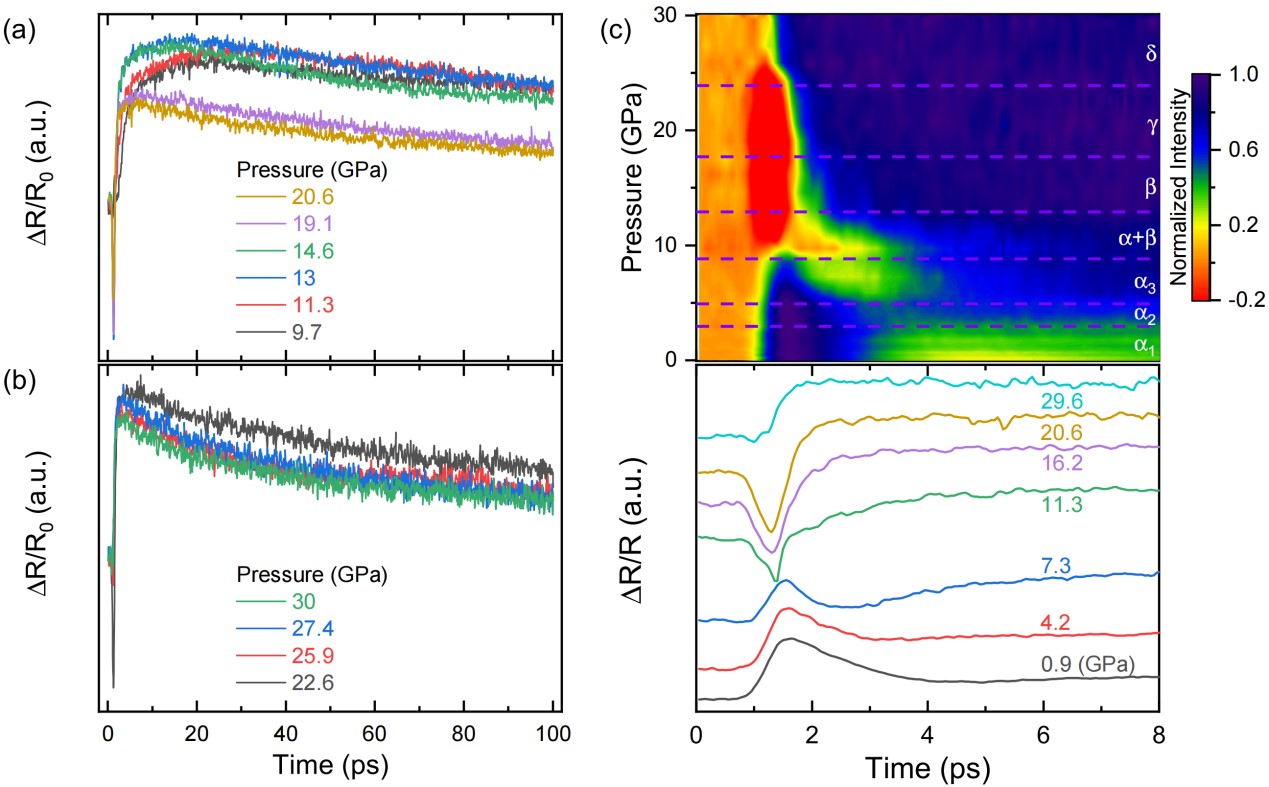
A collaborated team led by Prof. SU Fuhai from Hefei Institutes of Physical Science (HFIPS), Chinese Academy of Sciences (CAS), together with researchers from Aerospace Information Research Institute, High Magnetic Field Laboratory of HFIPS and Center for High Pressure Science and Technology Advanced Research, studied the nonequilibrium electron and phonon dynamics of topological insulator Sb2Te3 under pressure, and explored the ultrafast photophysics across the electronic topological and lattice structure transitions.
The relevant work has been published in Physical Review B.
Ultrafast spectroscopy can record the evolution of excited states with femtosecond time resolution, and then allow for the direct access to the ultrafast dynamics involving the hot electrons cooling, coherent phonons, electron-phonon couplings, and others. Pressure modulation using diamond anvil cell (DAC) provides a simple and clean route to continuously tune the lattice and electronic structure in materials, leading to the different phase transitions. Especially, the pressure-induced electronic topological transitions (ETT), without a concomitant of lattice abruption, normally play vital role in the thermal electronic performance, and superconductivity in high-pressure phase materials. However, the acquisitions of the knowledge for the interactions between electron and phonon across ETT remain challenging.
In this work, the researchers investigated the ultrafast photocarrier dynamics of the Sb2Te3, one of prototypical topological insulators, using femtosecond optical pump-probe spectroscopy (OPPS) in combination with DAC.
The OPPS was employed to track the nonequilibrium relaxations of hot electron and coherent acoustic phonon in the time range of 100 picoseconds under hydrostatic pressure up to 30 GPa. Supported by the Raman spectroscopy, they identified the ETT and semiconductor-semimetal transition around 3 GPa and 5 GPa from the pressure dependence of phonon vibrations, relaxation time constants and coherent phonons.
Intriguingly, the OPPS unveiled a hot phonon bottleneck effect at low pressure, which was found to be effectively suppressed along with the onset of ETT. This phenomenon was interpreted in terms of the abrupt increasing in the density of state and the number of Fermi pockets, according to the calculated electronic and lattice structures. Furthermore, they found that the pressure dependence of the photocarrier dynamics also could exactly reflect the lattice structure transitions including α-β and β-γ phase changes, even the mixed phase.
This work not only developed a new understanding of the interactions between electron and lattice in Sb2Te3, but also may provide an impetus to assess the pressure-induced topological phase transitions based on the ultrafast spectroscopies.
This work is supported by the National Natural Science Foundation of China,Hefei Science Center CAS.

Figure 1: Transient reflectivity spectra of Sb2Te3 at different pressures. (Image by SU Fuhai)